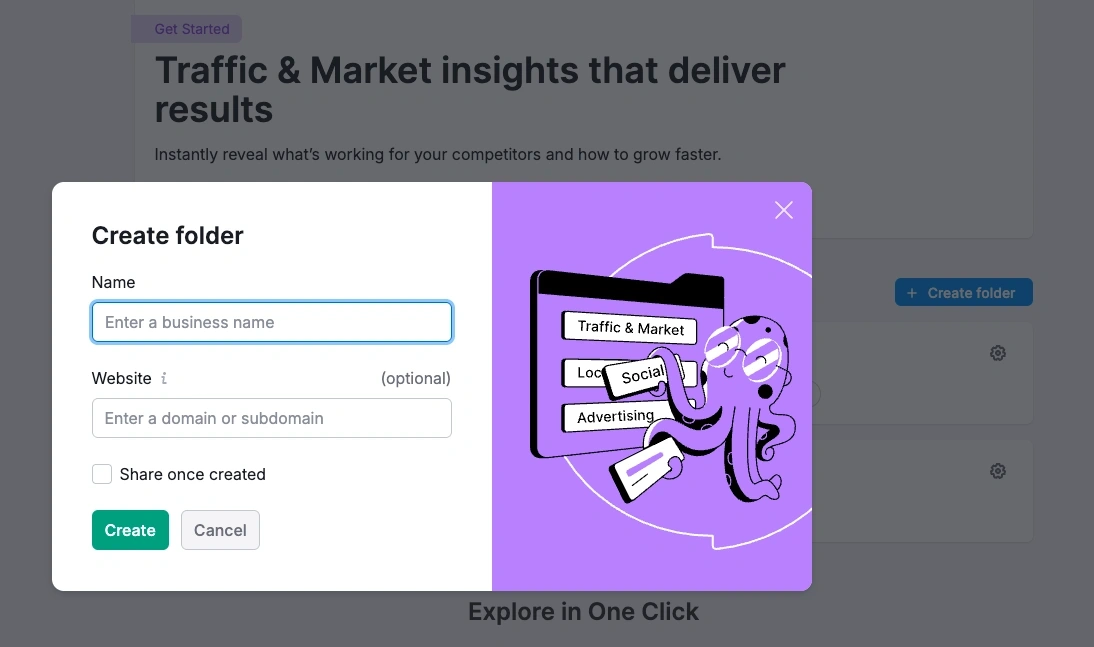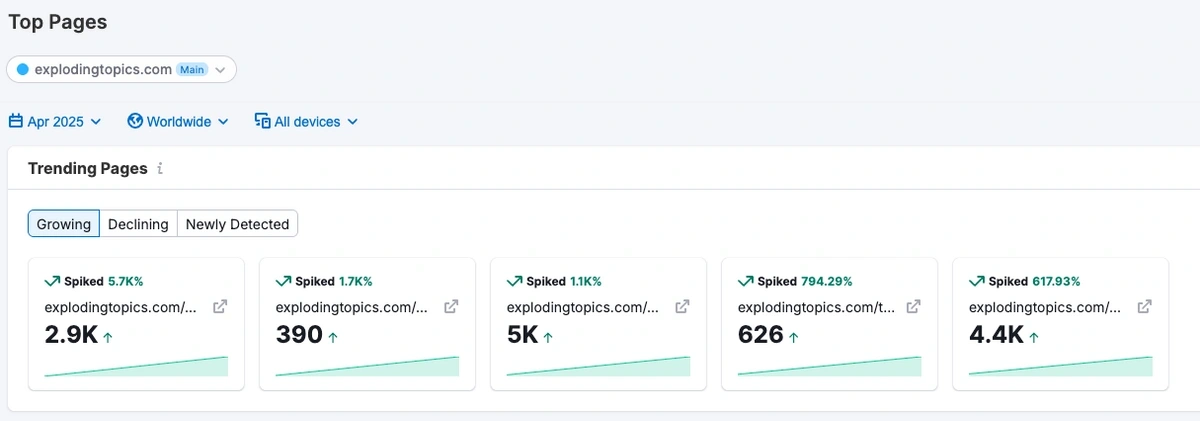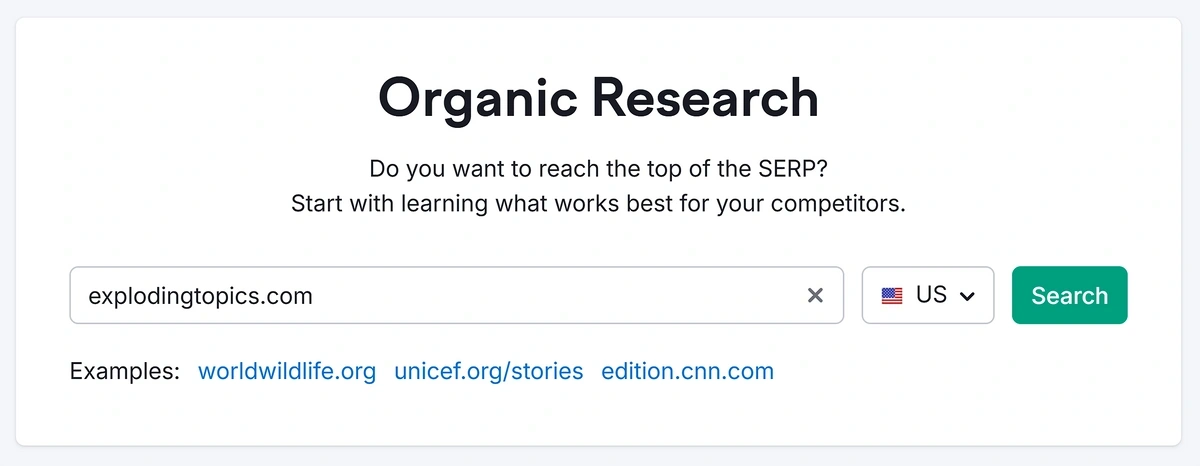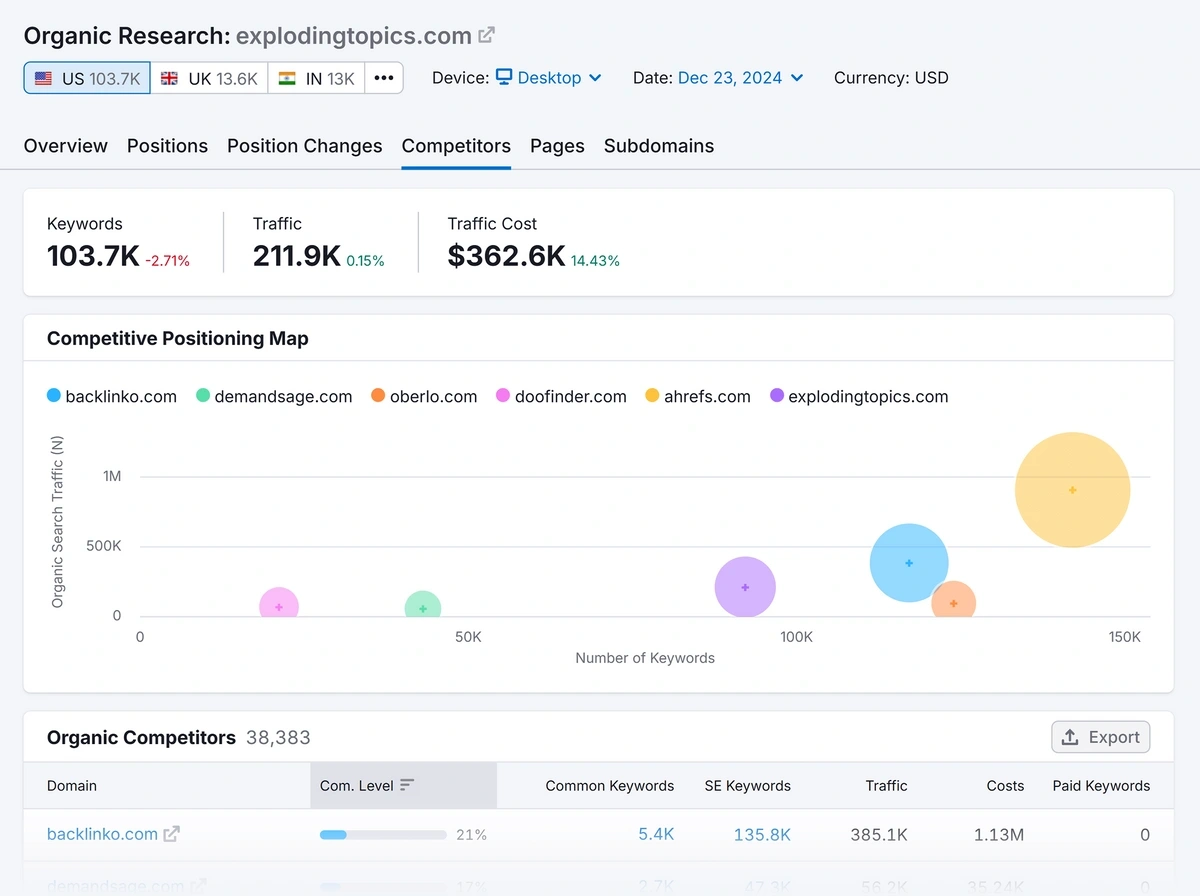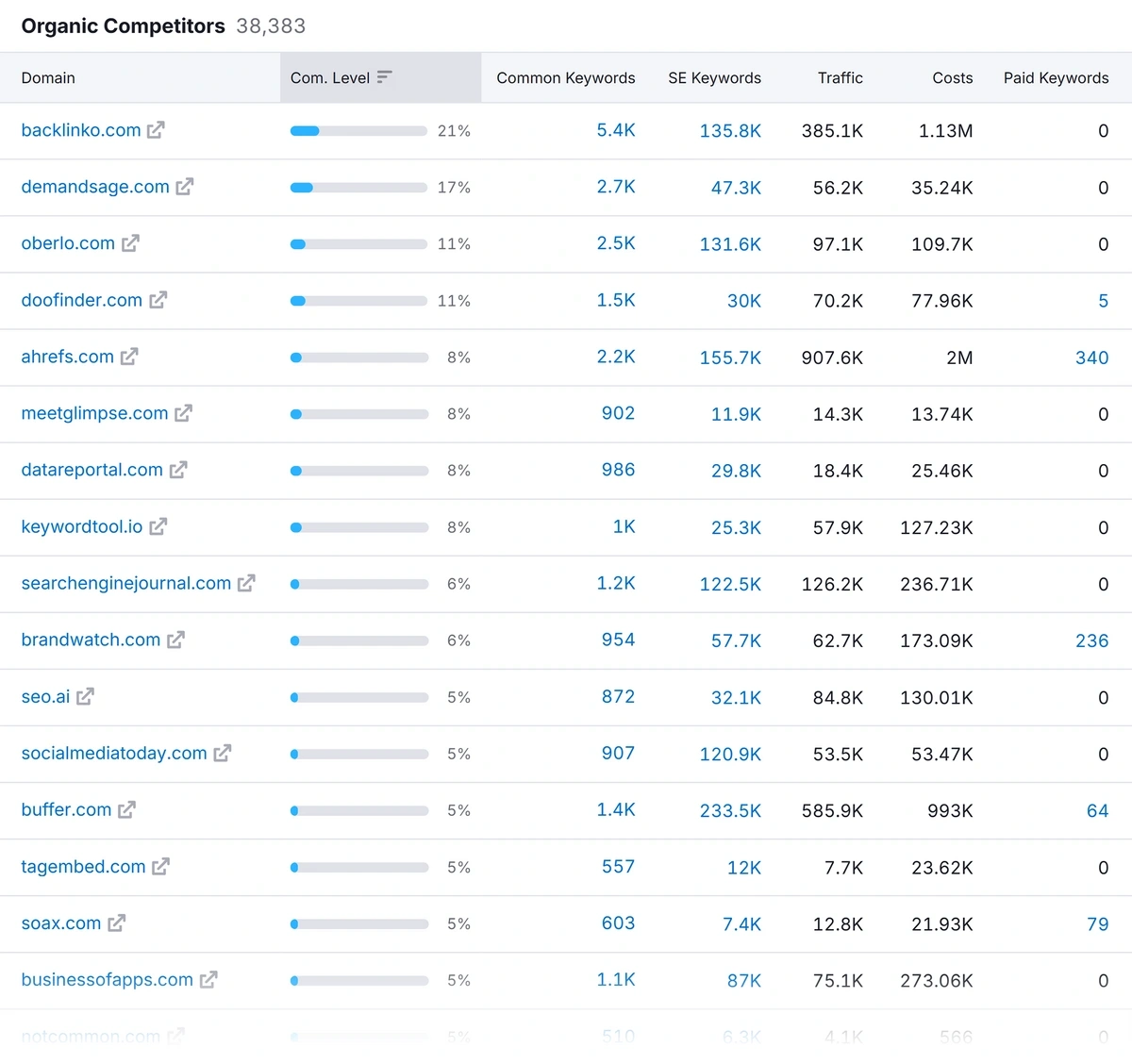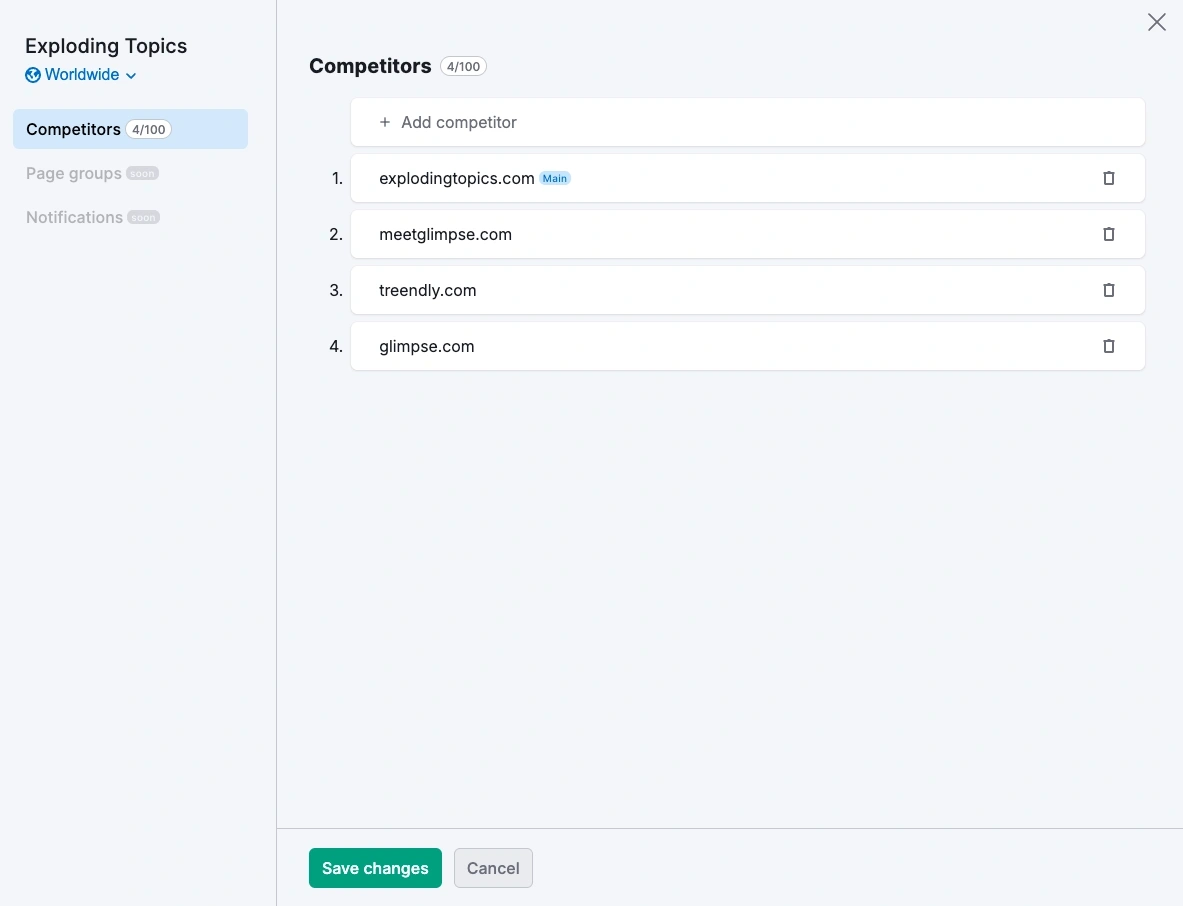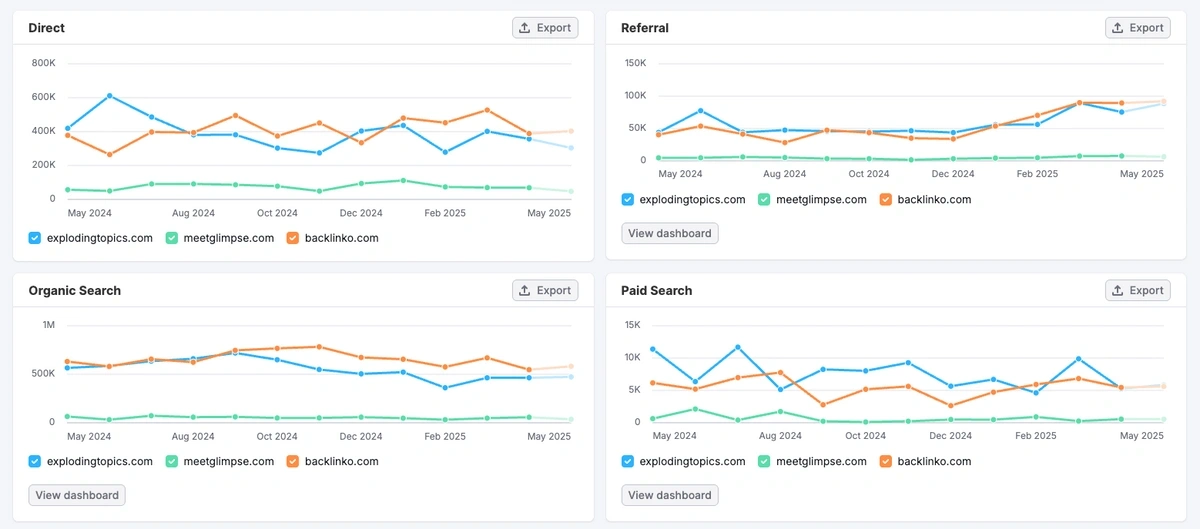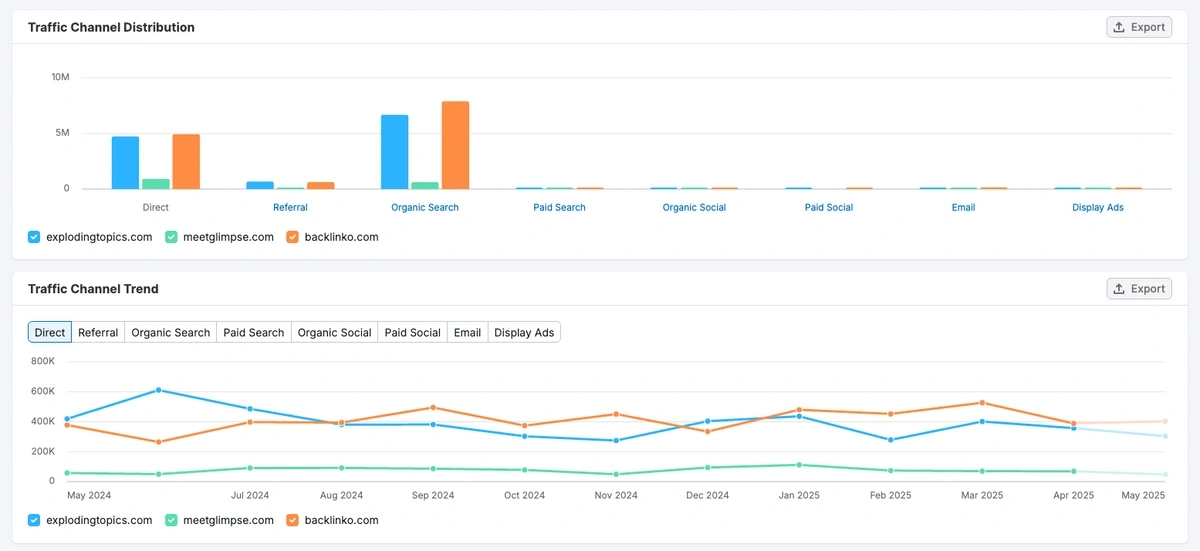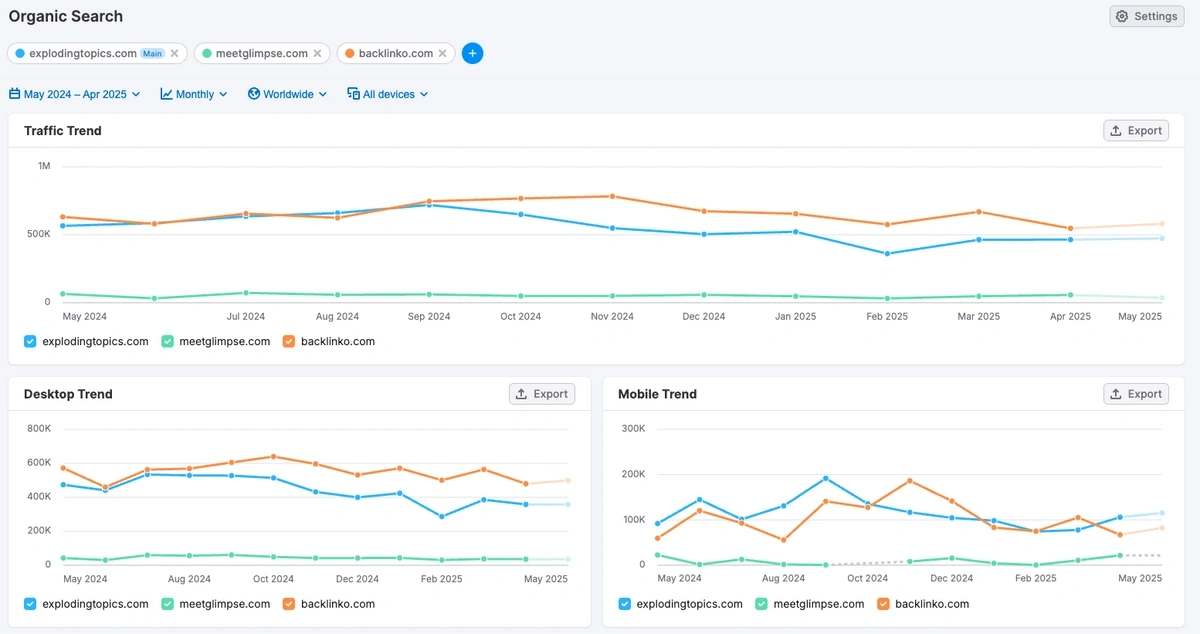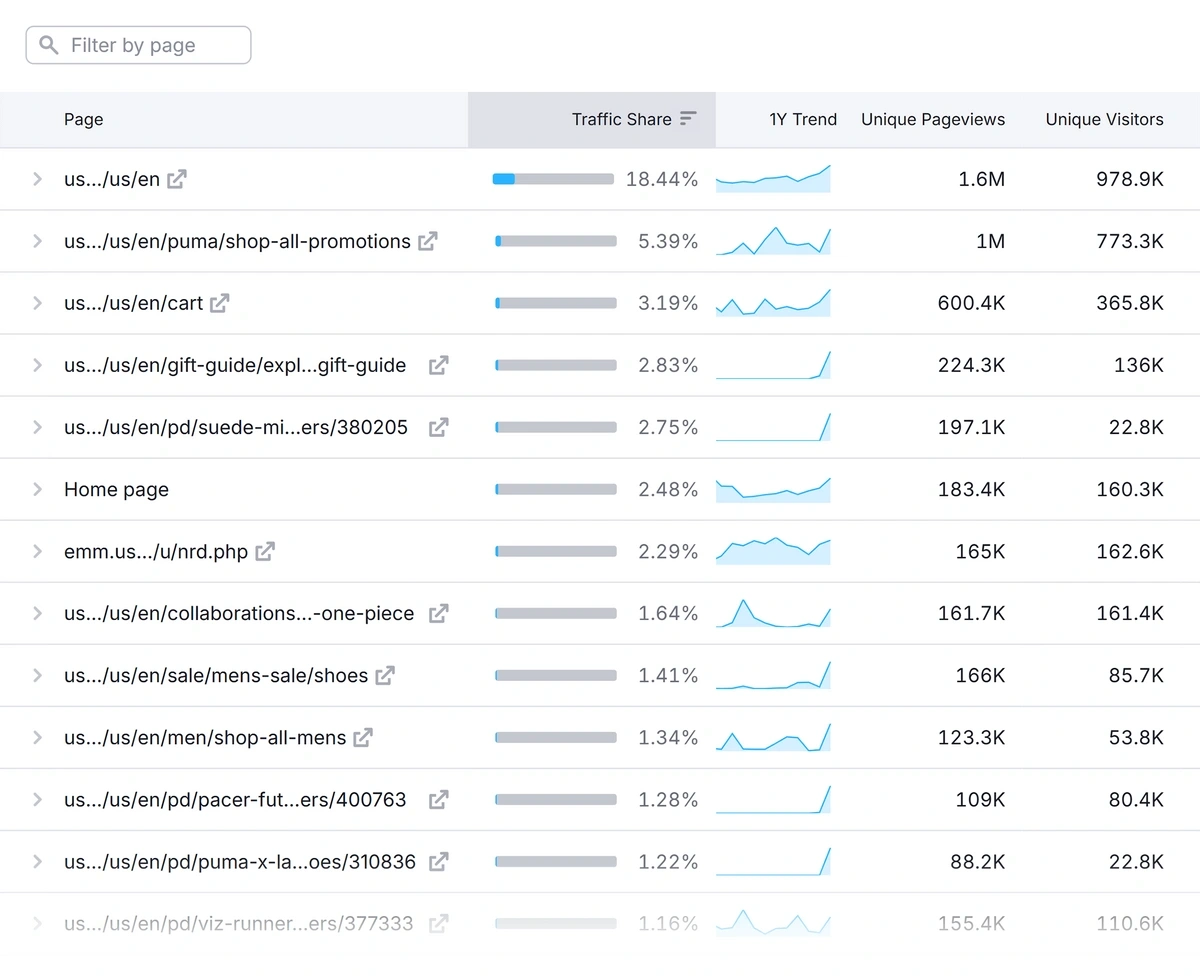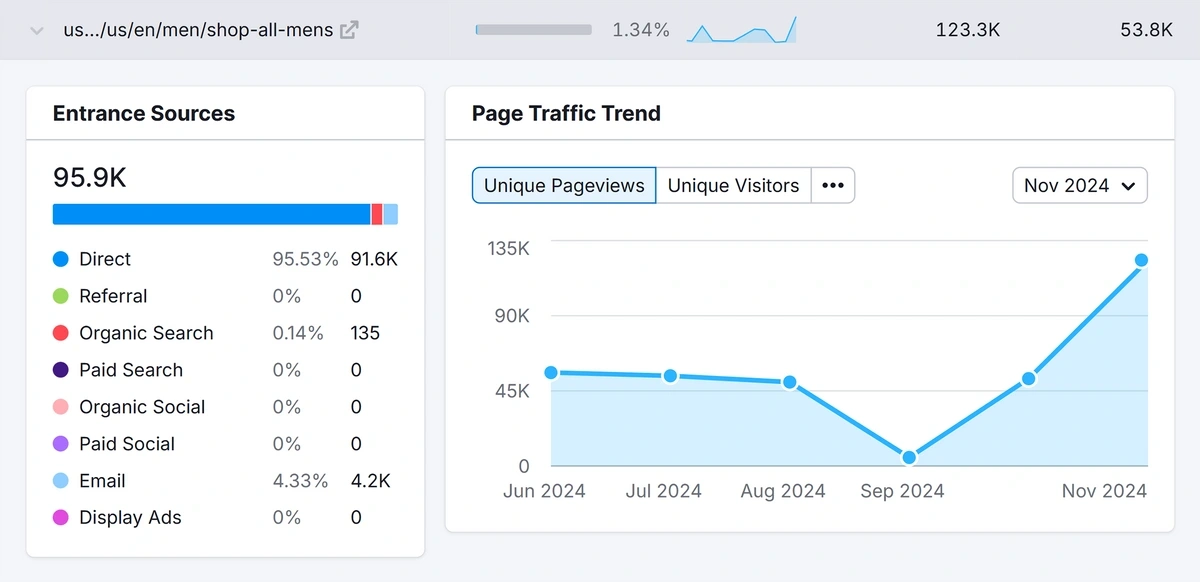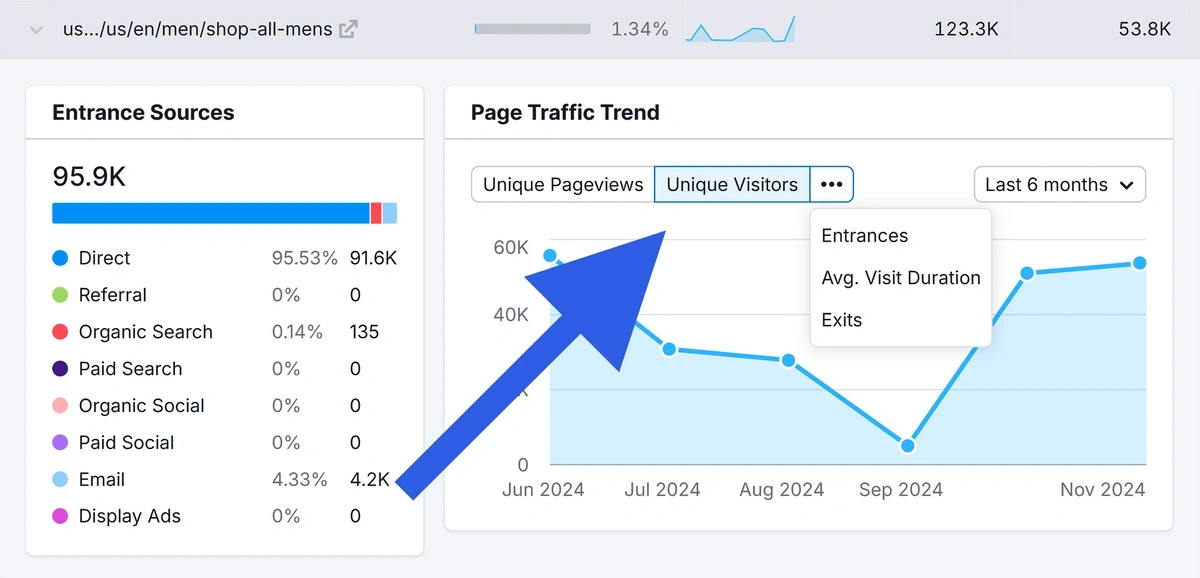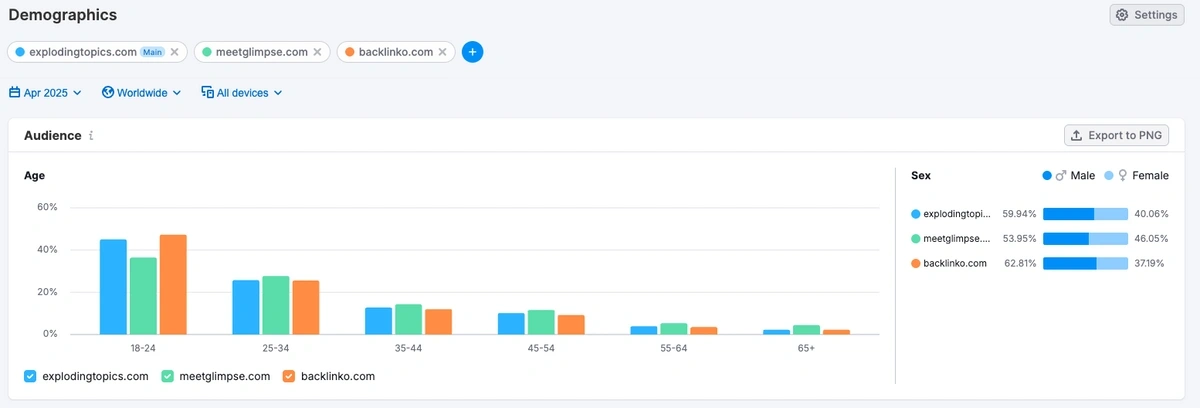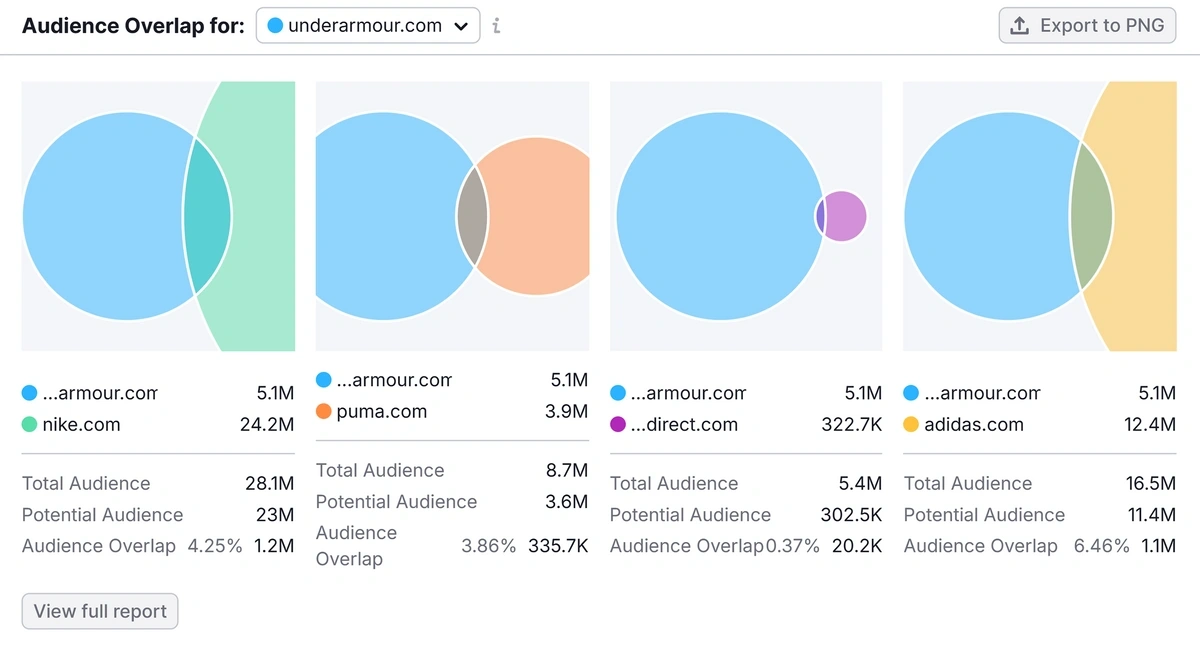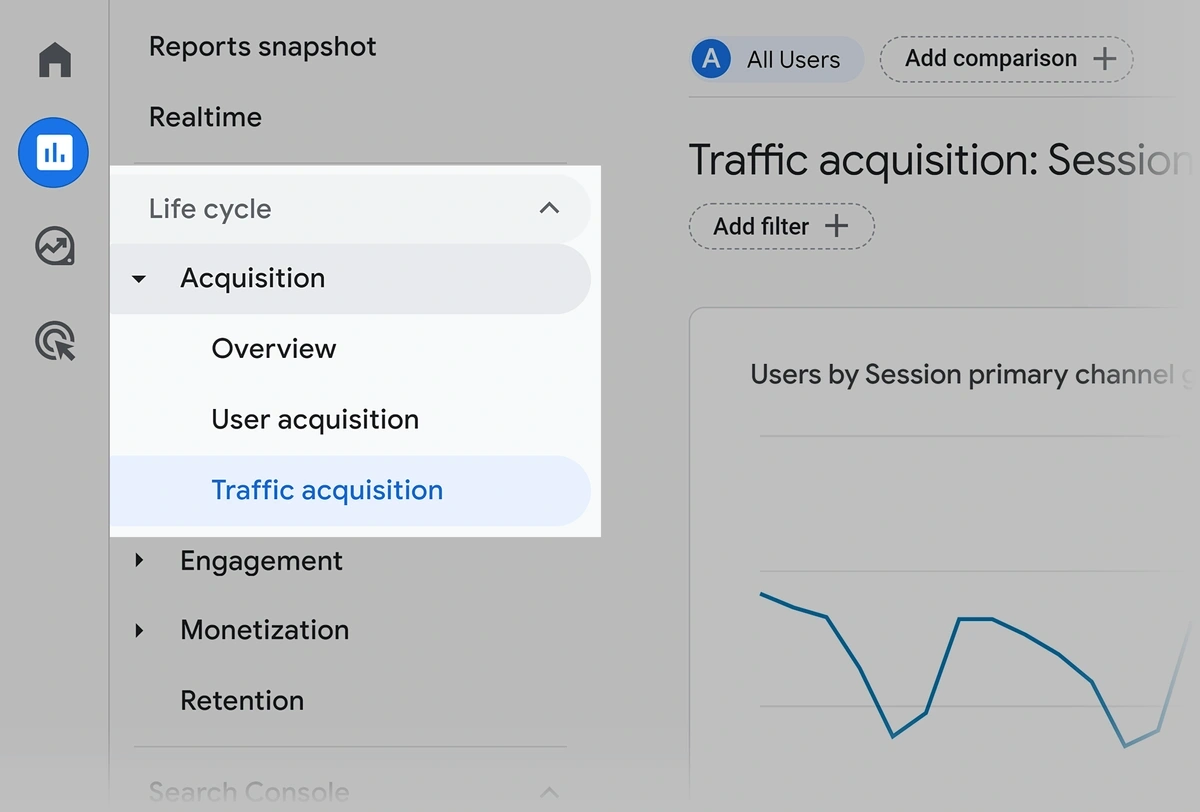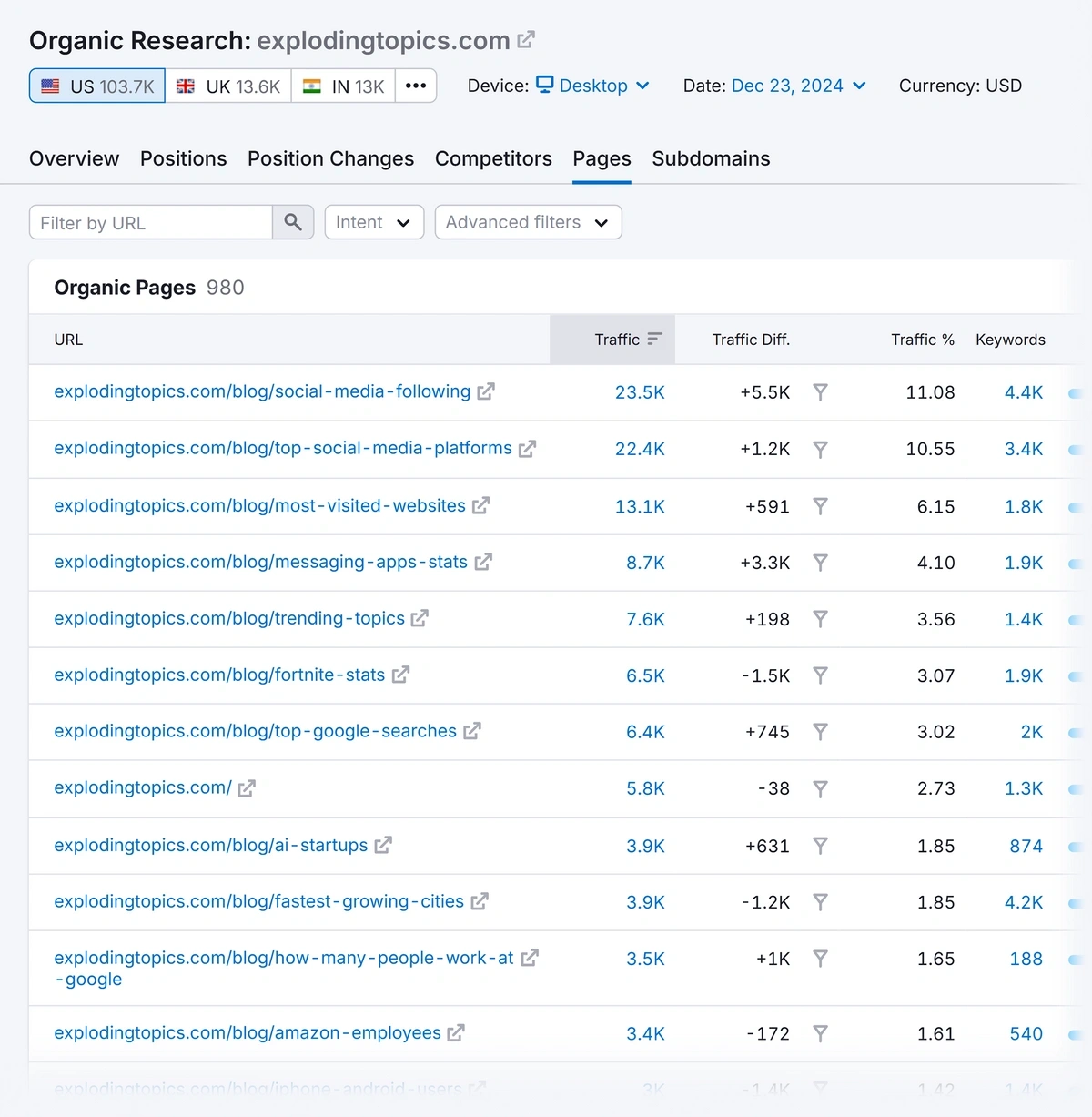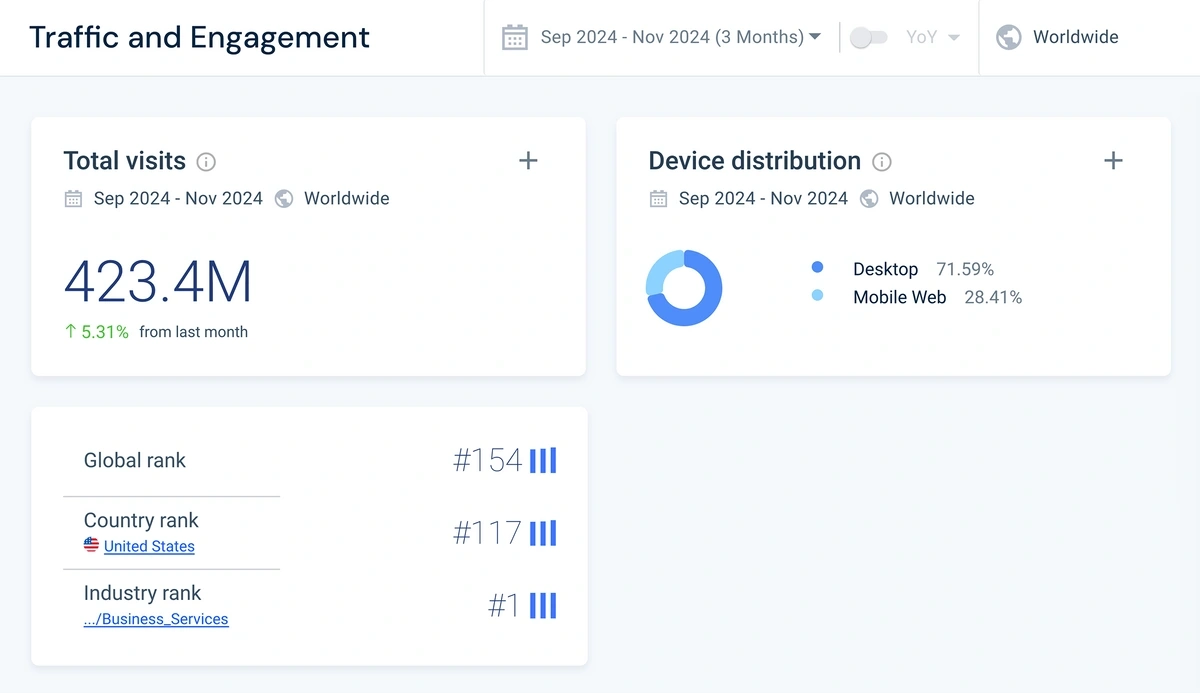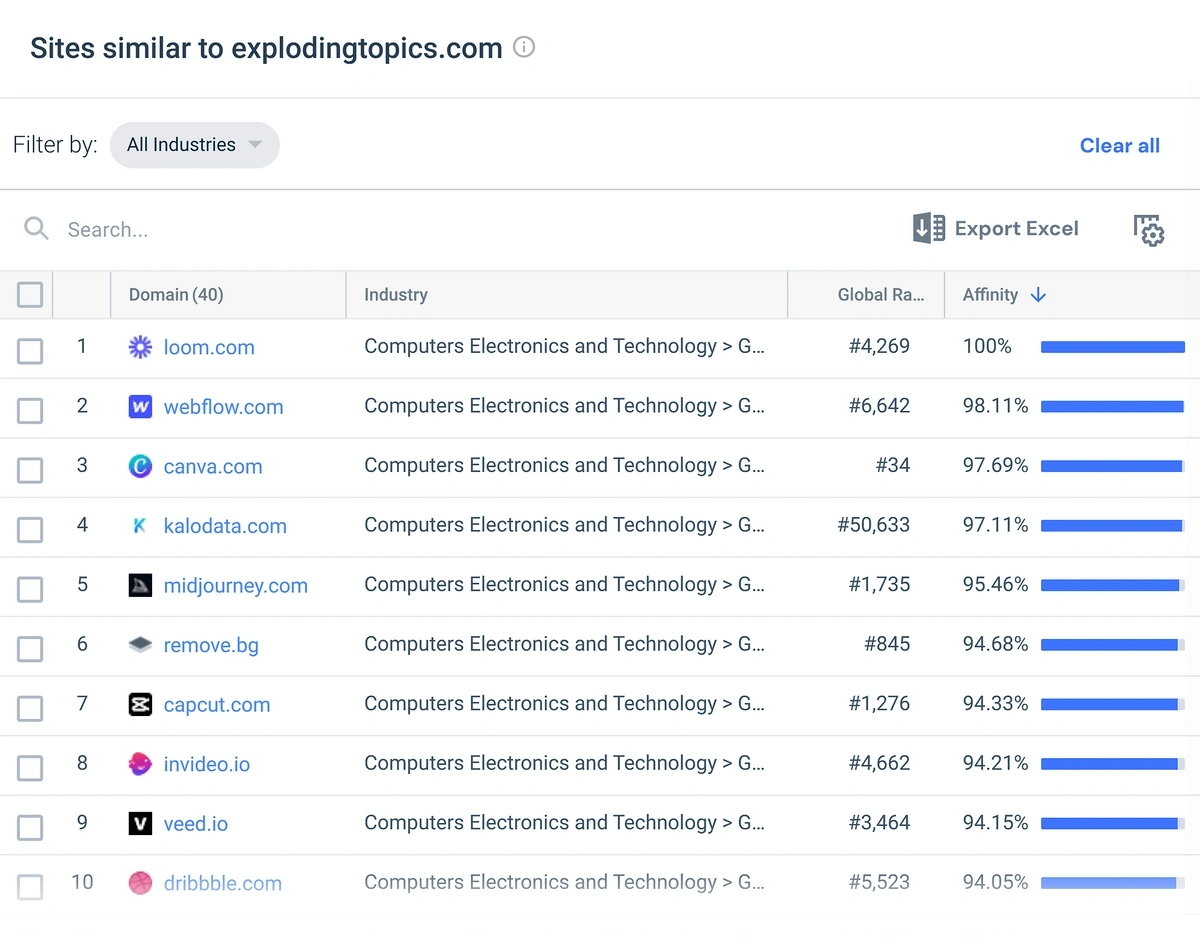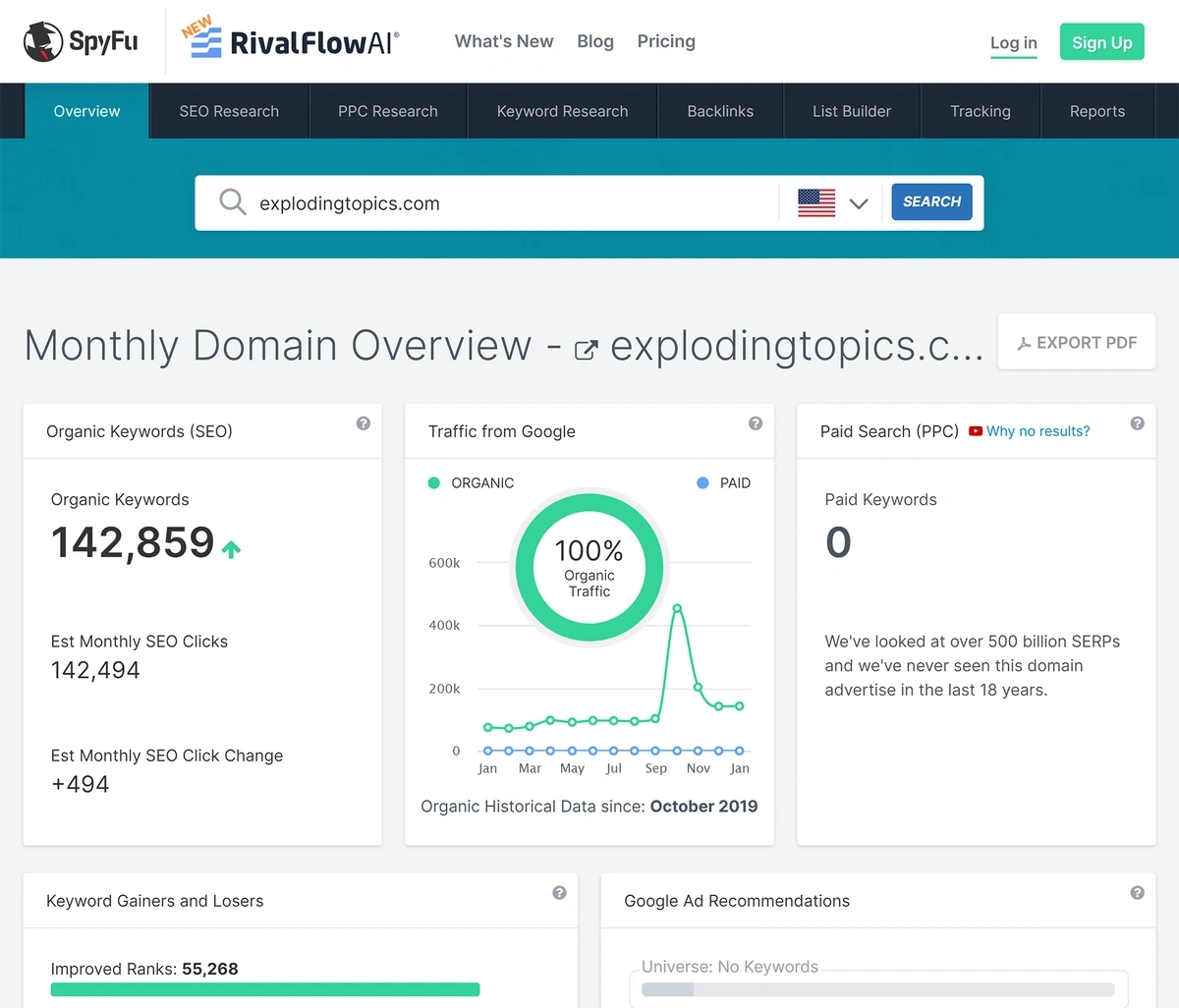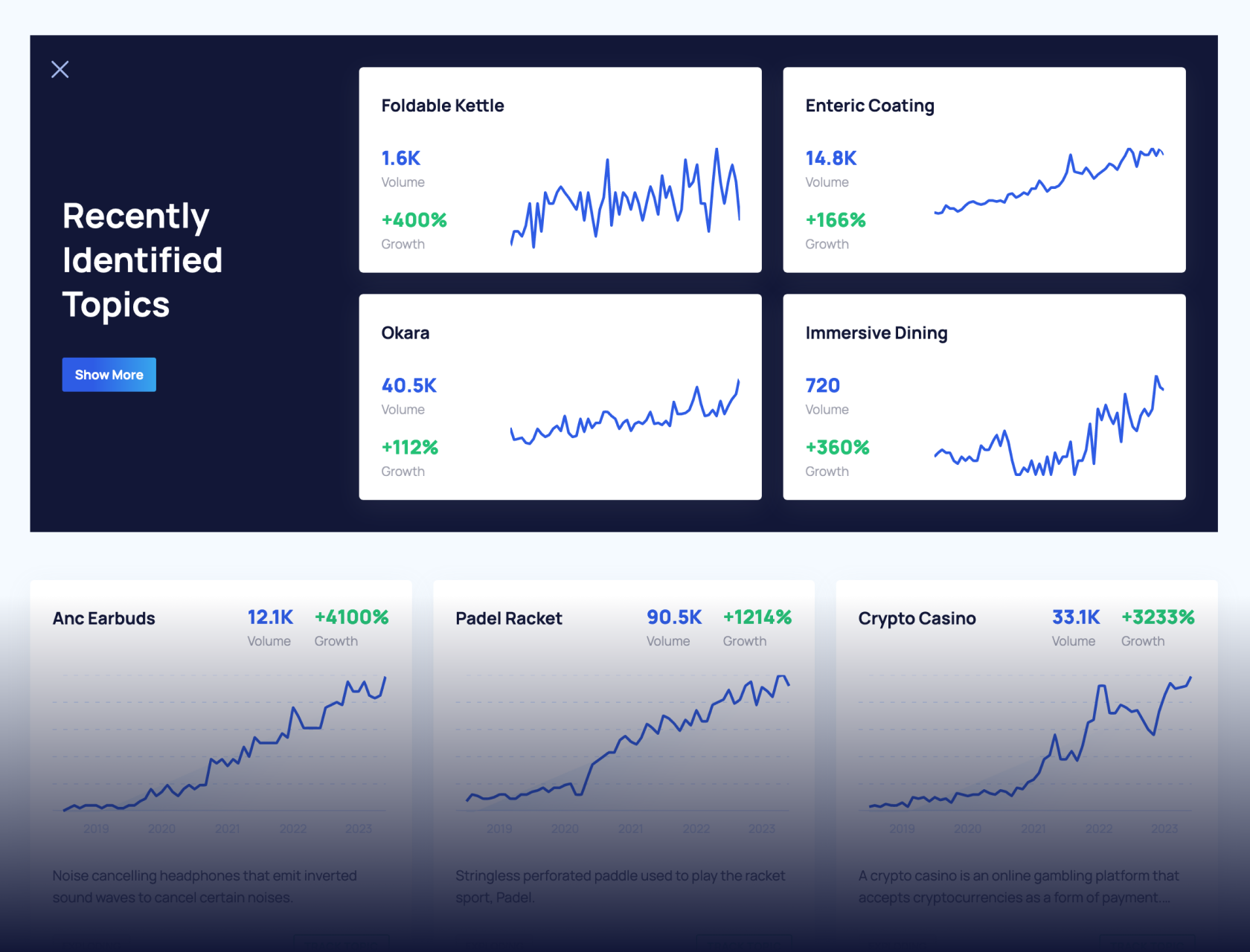
How to Analyze Competitor Website Traffic [5 Best Tools]
As a business owner, it's important to know how you stack up against the competition.
How do your competitors rank in search engine results? What strategies do they use to drive engagement and sales?
One way to answer these questions is to analyze competitor website traffic. You'll look into:
- How much traffic your competitors get
- Where their visitors come from
- What types of content are ranking well.
These insights can help you determine what other companies do well and where they fall short.
Want to compare traffic analytics tools? I've included a list of my favorite traffic checker tools near the end of this post. Check it out for a quick comparison.
What Is Competitor Traffic Analysis?
Competitor website analysis provides insights into website performance. Specifically, it compares metrics like:
- Traffic sources
- Visitor behaviors
- Engagement metrics.
Reverse-engineering competitor strategies can help you attract more visitors to your own site.
Depending on the tools used, you can determine:
- How much web traffic your competitors are driving
- Which pages are getting the most traffic
- Whether visitors come from paid ads, organic (unpaid) search, or other sources
- How long they spend on a website or webpage
- Audience demographics such as age, gender, and location.
You can use Semrush Traffic Analytics to check up to five competitors at once.
The tool will scan your competitors’ domains and provide insights into their top pages, audience demographics, and more.
To start, click "create folder" and enter your business name (or the competitor you want to analyze) and the domain, then click "Create."
Traffic Analytics allows you to manually add up to 100 competitors to compare, or it'll automatically gather 100 competitors in the space and provide insights. Plus, it reveals the top pages on your own and competing sites.
Use this data to optimize your digital marketing campaigns, ad targeting, and content strategy.
Further reading: Best Competitor Intelligence Tools
Want to Spy on Your Competition?
Explore competitors’ website traffic stats, discover growth points, and expand your market share.
Why You Should Analyze Your Competitors' Traffic
Analyzing your competitors' traffic helps identify trends and popular topics.
You can use this to guide your marketing strategy.
For example, you can check competitor site traffic during the last holiday season. This analysis can help you to target similar customer segments in the next sale season.
You can also:
- Identify keyword opportunities
- Learn more about your audience's goals and pain points
- Create content that attracts traffic and leads
- Find opportunities to boost your search engine rankings
- Optimize your website layout, navigation, and content to improve user experience.
This article explains the most important steps when analyzing competitor website traffic, including the tools you need to use.
Pro tip: Register for a free Semrush account (no credit card needed) so you can implement the steps in this guide.
How to Analyze Competitor Website Traffic
First, you’ll want to decide what you want to measure and compare. The Exploding Topics Analytics tool shows you the most-visited websites in 50+ verticals, but you may well want to take a deeper dive into specific competitors.
Identify Your Competitors
Start by identifying your organic competitors. These are companies that compete for organic traffic, which means they target the same keywords.
Use Semrush Organic Research to find competing websites in your niche and beyond.
Enter your domain name in the designated field. Select a target market, and click "Search."
Next, click on the "Competitors" tab.
Under "Organic Competitors", you'll find a list of domains competing against your business in Google's top 20 organic search results.
The domains appear in descending order by competition level. This metric is based on the number of keywords targeted by each competitor.
You can also see the number of keywords you share with a competing domain. You can use this data to perform a website traffic comparison at the keyword level.
In the above example, Shape Your Energy targets similar keywords to Doll Fitness, Titan Training Fit, and Tamashi.
Further reading: How to Find & Analyze Competitor Keywords.
Define Your Objectives
Next, think about what you want to accomplish by analyzing your competitors.
You might want to:
- Drive more traffic to your website
- Define or refine your target market
- Study your competitors’ conversion funnels so you can optimize your own.
To achieve these goals, focus on key website metrics, like:
- Total traffic/visits: The total number of visitors to a domain
- Unique visitors: The number of unique visitors to a domain
- Average session duration: The average time people spend on a website during a single visit
- Bounce rate: The percentage of sessions that included just one page view, lasted 10 seconds or less, or didn't trigger a conversion event
- Conversion rate: The percentage of users who take the desired action on a website, such as booking a demo
Looking at multiple metrics is important. For example, your competitors may get a lot of traffic, but their content might not be engaging enough if visitors spend little time on their sites.
Pro tip: Check your competitors' audience demographics, too. Leverage this data to identify gaps in your targeting strategy and craft content that converts.
Analyze Total Website Traffic
Now that you know who your competitors are, go back to Semrush Traffic Analytics to see how many people are visiting their websites.
First, log in to Semrush and access the tool from "Traffic & Market > Traffic Analytics."
Next, enter up to 100 competitor domains in the designated field. Choose your target country or region from the drop-down menu under the name of your folder and click "Save Changes."
Semrush will scan your competitors' domains and generate traffic data for each. The total estimated monthly traffic will appear under "Visits" column in the "Summary" section.
Additionally, you'll be able to see other key metrics, including total unique visitors, pages per visit, average visit duration, and bounce rate.
Hover your mouse over the number of visits. There you can see the estimated traffic for the current month—and the previous month.
You can analyze these numbers to understand whether your site is performing above, below, or at industry standards.
You can also check your competitors' total traffic to learn more about the overall market size.
Pro tip: Enter your domain name and up to four competitors (instead of five) when setting up the Traffic Analytics tool. This way, you can benchmark your performance against theirs.
Review Website Traffic Trends
Look for trends and patterns in your competitors' traffic with the Semrush Traffic Analytics tool.
From the "Summary" section, scroll down the page to "Traffic Trend."
Click "Visits" and then select a period—such as the last six months or 1 year—from the drop-down menu at the top of the page.
This lets you:
- Compare your traffic patterns to those of your competitors to find areas where you need to improve.
- Look at the changes in organic traffic over time to see how well their marketing campaigns have worked.
There's also the option to do a growth comparison.
For example, you can adjust the chart to view track monthly or quarterly rather than daily. Or, you can adjust the time period and view traffic changes over a shorter or longer span.
You can easily compare your competitors' traffic fluctuations from one month to the next in the same year or consecutive years.
It's easy to compare traffic with competitors across different channels, too. The Daily Trends tab highlights traffic across all channels, including:
- Direct
- Referral
- Organic Search
- Paid Search
- Organic Social
- Paid Social
- Display Ads
We'll cover these in more detail below.
If a competitor experienced rapid traffic growth in a given month or quarter:
- Try to determine what they did differently. Research their marketing tactics to see if there's anything you can replicate.
- Track competitor website traffic over time to identify potential threats.
- Be proactive and revise your SEO strategy to maintain or improve your position in organic search.
Further reading: Best AI SEO tools to improve your rankings
Evaluate Website Visitor Journeys
A visitor journey shows you where website visitors come from and where they go after ending their session.
With this data, you'll identify the channels that drive search traffic to competing sites.
You can use those channels to reach more customers and gain exposure.
All of this data is available in the Traffic Analytics dashboard. Scroll down to the "Traffic Journey" section to locate it.
Next, check the diagram under "Traffic Channels" to see how users find your competitors' websites.
You can also dig deeper into the traffic journey, dividing it by channel. As we mentioned, Traffic Analytics displays eight traffic channels:
- Direct: Visitors who typed a domain to go directly to a site
- Referral: Visitors who clicked a link on another site
- Organic search: Visitors who clicked a link in organic search results
- Paid search: Visitors who clicked a search engine marketing ad
- Organic social: Visitors from social networks
- Paid social: Visitors from paid ads on social media
- Email: Visitors who clicked a link in an email (such as a newsletter)
- Display ads: Visitors who clicked an ad on a third-party platform (like a banner ad inside an app)
Now scroll down the page to view the "Traffic Channel Distribution" and "Traffic Channel Trend" sections. From here, you can sort your competitors' traffic channels by category by clicking the respective tab.
To gain further insights, you can go into a specific traffic channel's dashboard to view overall traffic and granular data by device.
To view a source or destination, click the arrow icon next to it. The link will open in a new tab.
Discover Your Competitors' Top Pages
Use Semrush Traffic Analytics to discover your competitors' top-performing pages. This can help you determine what types of content might work best for you.
At the bottom of the Traffic Analytics dashboard, you'll see a list of top pages for each competitor included in your list.
The tool will display your competitor's top web pages.
The report also shows the percentage of visits to a listed page in the "Traffic Share" column.
For each page, you can see the number of unique views and visitors. And other data, such as the average visit duration and traffic sources.
Click on a given page for additional traffic insights.
Select a period from the drop-down menu on the right. Then click on any tab under "Page Traffic Trend" to track the changes in unique pageviews, average session duration, and other metrics over that period.
Compare Your Competitors’ Audiences
Many of your organic competitors are looking for the same customers you want to attract.
By analyzing their website visitors, you can refine your ideal customer profile and:
- Identify untapped customer segments
- Find areas where you can outperform your competitors
- Determine the extent of overlap between their audiences and yours
- Create more relevant content that aligns with your customers' interests
Check the "Demographics" report within Semrush's Traffic Analytics tool, located under the Audience Profile tab.
This report displays the age, gender, and location of your competitors' audience.
For instance, 59.94% of Exploding Topics' website visitors last month were male. And 20.4% of its visitors during that period were 18 to 24 years old, while 31.02% accessed its site from the U.S.
Lastly, check out the "Audience Overlap" section. Here you can see where your competitors' audiences overlap with each other.
The graph below illustrates the audiences of sports apparel brands.
The blue circle depicts Under Armour, which has the audience of 5.1 million monthly visitors.
Approximately 4.25% of its target market overlaps with that of Nike. This means that 1.2 million consumers visited both websites in a given month.
The shared audience between Under Armour Sports Direct is rather small (less than 0.5%).
Use these traffic stats and the audience information listed earlier in the report to improve your reach.
Benchmark SEO Performance Against Your Competitors
Use the information you have on your competitors for SEO benchmarking.
Through this process, you'll measure your website's search engine performance—and take steps to improve it.
First, define the benchmarks you'll focus on. These could be:
- Organic traffic
- Average session duration
- Conversion rates.
Next, compare your website's performance in these areas with that of your competitors.
You can use Google Analytics 4 to measure organic traffic to your site over a given period. You'll find this data under "Reports."
Click "Acquisition" > "Traffic acquisition" and then select a time frame.
GA4 will display the amount of traffic you get from:
- Organic search
- Organic social
- Direct search.
You can now perform a competitor analysis with Semrush Traffic Analytics. This allows you to see how your organic traffic compares to that of other websites.
Repeat these steps to benchmark your bounce rate, page views, paid traffic, and other metrics against your competitors. Look for trends, patterns, and growth opportunities you may have overlooked.
This process will give you a better understanding of where you stand in the market and how to gain a competitive edge. It can also uncover areas for improvement and gaps in your marketing or SEO strategy.
Further reading: What Is Competitive Benchmarking? A Beginner's Guide
Top 5 Tools for Competitor Website Traffic Analysis
Check out these SEO tools for gathering competitive intelligence, including traffic data.
| Traffic Analysis Tool | Key Features | Free Trial? | What Makes It Unique? |
| Semrush Traffic Analytics | Analyzes up to 5 domains for traffic sources, audience data, and competitor insights. | Limited free version | Breaks down competitor traffic by device, social network, visitor journey, and demographic data. |
| Semrush Organic Research | Tracks competitor rankings and organic keyword traffic. | 7-day trial | Lets you filter competitor data by device, location, and date with extensive historical data. |
| Similarweb | Analyzes website traffic, engagement metrics, and keyword performance. | 7-day trial | Compare your site with up to four competitors side-by-side and filter competitors by industry categories. |
| SpyFu | Shows SEO performance, keyword data, and PPC campaign insights. | Yes (limited features) | Estimates your competitors' monthly Google Ads budget and traffic. |
| Ahrefs | Powerful traffic analysis and SERP overview features for organic channels. | No | Free Website Traffic Checker gives quick organic traffic estimates. |
Semrush Traffic Analytics
Semrush’s Traffic Analytics is a competitor analysis tool that provides traffic estimates for up to five domains at once.
You'll also get audience research data, such as:
- Preferred devices
- Demographic information
- Preferred social networks
- Socioeconomic data
With this tool, you can see where your competitors' traffic is coming from.
Traffic Analytics has a free version with limited access to competitor data. To get a full report, purchase Semrush Traffic & Market Pro for $289 per month.
You can add this option to any premium plan, including:
- Pro: $139.95 per month
- Guru: $249.95 per month
- Business: $499.95 per month
Semrush Organic Research
With Organic Research, you can check competitor website traffic and organic keyword rankings in search results.
The tool provides data on:
- Traffic volume
- Search engine traffic fluctuations
- Backlinks.
You can also use Organic Research to:
- Identify your competitors
- Break down competitor data by device, date, country, and other criteria.
Semrush offers a free version of the Organic Research tool.
To unlock all of its features, sign up for the Pro ($139.95 per month), Guru ($249.95 per month), or Business ($499.95 per month) plan.
Similarweb
Register with Similarweb to analyze your competitors' website performance in search results.
Use this tool to uncover the keywords your competitors are ranking for, plus:
- Their total traffic over a given period
- Global, regional, and industry rankings
- Monthly unique visitors
- Average session duration
- Bounce rates
- Referring domains
- Marketing channels
Similarweb can also help you discover your top competitors.
Go to the "Overview" section on the left and click "Similar Sites."
You can click on a competitor's domain name to see how it performs in search results. You can also compare your traffic stats with those of up to four competing domains at once.
Similarweb has a seven-day free trial. After it expires, you can use its basic features or sign up for a premium plan.
- Starter: $149 per month
- Professional: $399 per month
- Team: Custom pricing
- Enterprise: Custom pricing
Users can also request a demo for the Team or Enterprise plan.
SpyFu
Use SpyFu to discover your organic competitors and track their SEO performance.
You can see:
- Total monthly traffic
- Top-performing keywords and pages
- Ranking history.
You can also analyze your competitors' pay-per-click campaigns, including their estimated monthly Google Ads budget.
This allows you to estimate the number of clicks they get each month.
(For a full Google Ads competitor analysis, you can use the free Exploding Topics tool.)
In addition to traffic metrics, the Spyfu tool provides data on competitor backlinks, newly ranked keywords, and shared keywords.
SpyFu has a free version with limited features. To unlock its capabilities, register for the Basic or Pro plan.
- Basic: $39 per month
- Pro: $79 per month
Tip: SpyFu pricing is lower than Semrush, but Semrush is a more comprehensive marketing platform.
- See our comparison of SpyFu and Semrush
- Check out more SpyFu alternatives
Ahrefs
Ahrefs is an all-in-one SEO tool for website auditing, competitor research, and content optimization.
One of its core functions, the Site Explorer, lets you analyze:
- Competitor website traffic
- Backlinks
- Internal links
- Paid search performance.
It also shows your competitors' top keywords and the websites from which they get referral traffic.
Another cool feature is the Website Traffic Checker, a free tool that provides search traffic estimates.
Enter a competitor's domain to see its average monthly organic traffic, keyword rankings, and other data.
The free Ahrefs SEO tools are basic. Paid plans include more sophisticated tools, including the Site Explorer.
- Starter: $29 per month
- Lite: $129 per month
- Standard: $249 per month
- Advanced: $449 per month
- Enterprise: Pricing starts at $14,990 per year
Analyze Competitor Website Traffic with Semrush
Now you know how to use Semrush and other tools to learn more about competing websites, their visitors, and the content they like to read.
For best results, do an SEO competitor analysis at least every quarter. Repeat it whenever your competitors make a major move, such as entering a new market.
Ready to get started? Sign up for a free Semrush account to see what your competition is up to—and how to outrank them in search results.
Stop Guessing, Start Growing 🚀
Use real-time topic data to create content that resonates and brings results.
Exploding Topics is owned by Semrush. Our mission is to provide accurate data and expert insights on emerging trends. Unless otherwise noted, this page’s content was written by either an employee or a paid contractor of Semrush Inc.
Share
Newsletter Signup
By clicking “Subscribe” you agree to Semrush Privacy Policy and consent to Semrush using your contact data for newsletter purposes
Written By


Claire Broadley is the Lead Editor and AI Content Strategist at Exploding Topics, where she oversees editorial workflows, AI SEO s... Read more

